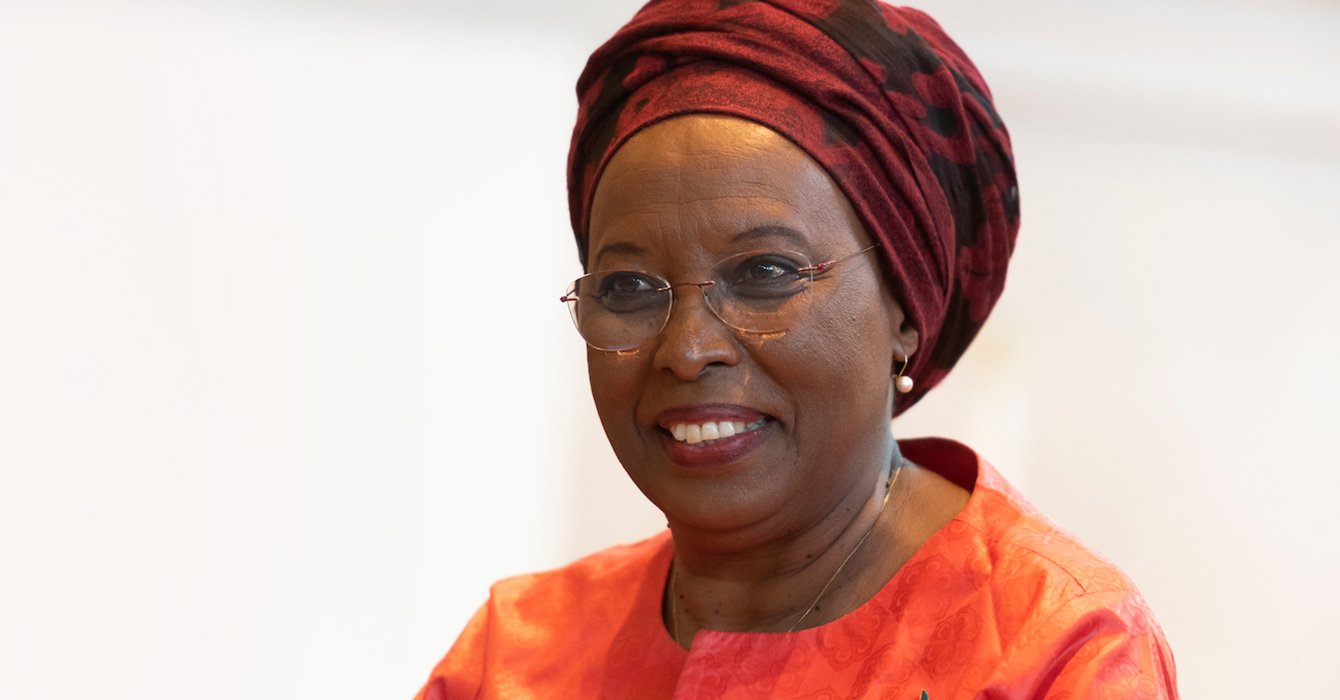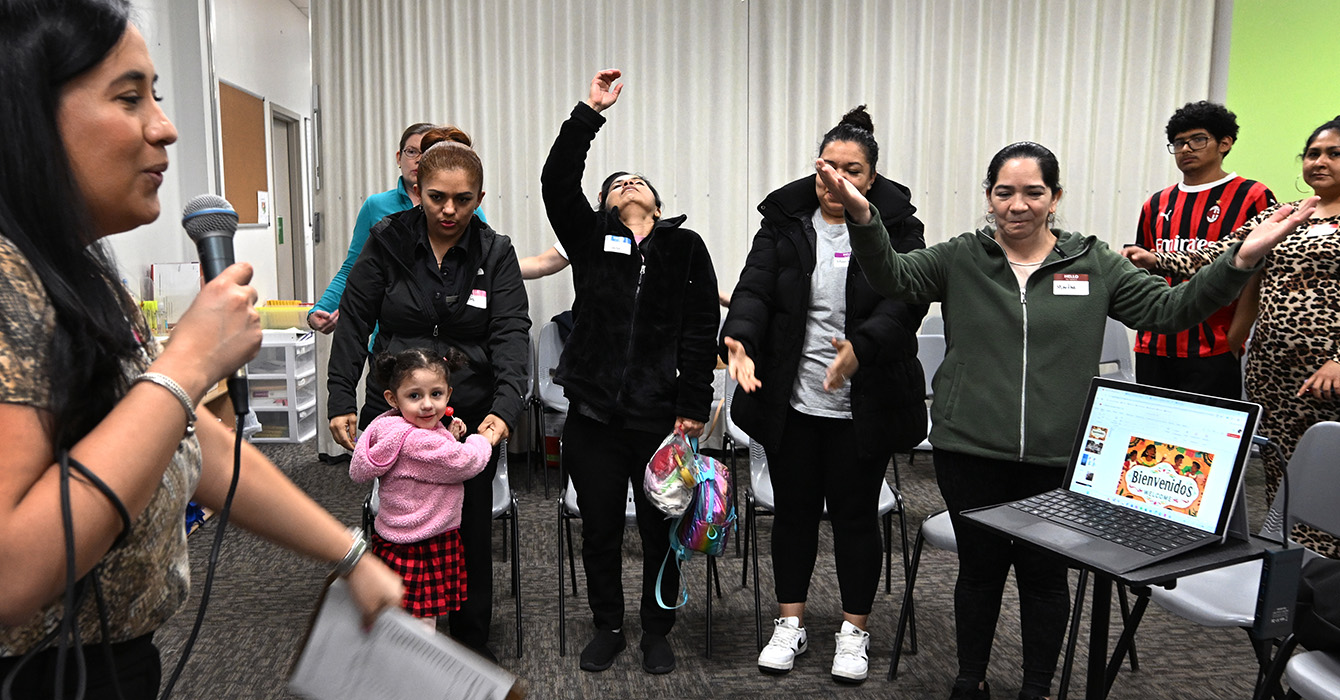The pandemic has wreaked havoc on working women. U.S. workforce data attests that the economic and employment impact has fallen disproportionately on women, particularly mothers also juggling child care responsibilities and school closures. Many are leaving the workforce.
There are no good figures on the number of clergywomen who have quit as a result of the pandemic, but Christian leaders say the coronavirus has exacerbated the already-stressful lives of women clergy. Many have reported exhaustion, burnout and decision fatigue from the prolonged struggle to care for their congregations, their households and, in many cases, communities combatting racism and anti-Asian violence that arose in response to the illness.
Lori Nelson, who as chief resilience officer for the city of Boston often works with clergywomen to help underserved communities overcome social and economic challenges, has seen this pressure up close. “What was clear is that they were still leading but also very taxed,” she said.
In many cases, clergywomen — particularly women of color — have functioned like first responders on the front lines of the pandemic, said the Rev. Laura Everett, the executive director of the Massachusetts Council of Churches.
“What we sometimes miss among clergy of color is the additional communal responsibility put on clergy colleagues to do communal and explanatory work in times of social change,” Everett said.
The stressors are particularly acute on women clergy serving small congregations with 100 or fewer members, where there is no other professional or paid staff to carry the burden, as well as on bivocational pastors managing commitments to other jobs.
“There was an urgency of being very well educated and informed about what this was,” said Nelson. “Then it was how you survive through it, the do’s and don’ts. Then how do you begin to message the importance of getting vaccinated, recognizing the stereotypes and stigmas and experiences of people of color.”
Even as their personal lives have grown more chaotic, many have responded by ramping up their outreach. For example, the Rev. Liz Walker of Roxbury Presbyterian, a small church in the middle of a mostly Black Boston neighborhood, partnered with another local clergywoman to start a series of vaccine education webinars. They landed Dr. Anthony Fauci, the director of the National Institute of Allergy and Infectious Diseases, as a guest for the first installment, drawing 2,800 online visitors.
The webinars, plus a weekly session the church offers for people overcoming trauma, are ongoing.
“I think we worked harder,” said Walker, who is well known in the community as a former Boston TV news anchor.
“The women I’ve worked with are very tired and very weary, but not giving up.”
The following are the pandemic stories of four women clergy — mothers, pastors and, in two cases, bivocational ministers — who lead small churches.

The Rev. Laurie Anzilotti: When home and work collide
During the early days of the pandemic, to escape the commotion in her home, Laurie Anzilotti began leading Zoom church services from her front porch.
One day, as she was conducting a funeral service from the porch, one of her four children came running outside shouting, “Mom, where are the hot dogs?!”
The moment captured a common experience of the pandemic: the disruption and chaos that result when the public and private spheres of work and home collide.
For Anzilotti, the vicar of St. Francis’ Episcopal Church, a mission of the Episcopal Diocese of Missouri, life at the height of the pandemic was messy, disjointed and occasionally awkward.
It was also stressful. Anzilotti’s husband, Craig, a dentist, was forced to shut down his business, leaving 14 full-time employees in limbo. Her four children, including a 15-year-old daughter with Williams syndrome, were all studying online at home.
In addition to caring for them, Anzilotti tried to attend to her 120 parishioners.
“I had the sense that I was always working and never working, always taking care of my house and my family and never taking care of my house and my family,” she said. “It was all happening in the same space all the time. There was no differential between the two.”
After the online funeral interruption, she instituted some changes, including a simple color-coded signal she set out for her family — a clipboard displaying a red paper when she was not to be disturbed, a yellow one when a brief interruption was OK, or a green one for, “I’m working, but I’m happy to entertain whatever question or conversation you want to have.”
Solving the isolation and loneliness of her parishioners took more time. Eventually, Anzilotti started offering drive-in Eucharist in the parking lot next to the church. Church members remained in their cars and were able to tune in to the service on an FM radio frequency.
It may seem that a smaller congregation means less work, but this is far from the truth. What other assumptions are we making about smaller congregations and their pastors?
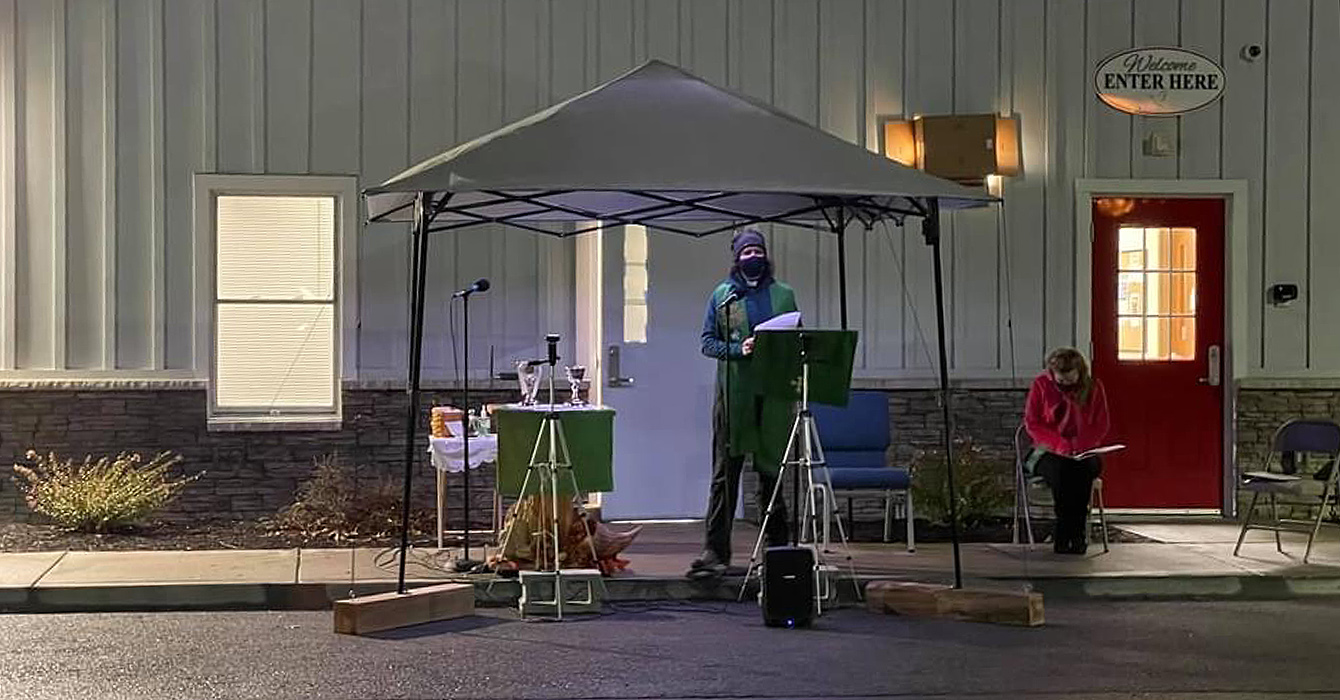
But her happiest innovation was a Wednesday noontime Eucharist service at a city park. She typically arrived around 11:45 a.m. to lay out a white tablecloth on a picnic table and distribute a psalm to those gathering around her.
The short service included a Bible reading, a short lectio divina, in which Anzilotti asked participants what word, thought, phrase or image spoke to them from the reading. She then followed with prayers for the people and the Eucharist.
“It’s very simple, but it’s one of the most profound spiritual times of my week,” she said.
This summer, indoor services have resumed at St. Francis’. Most of Anzilotti’s kids are away at camp. Her husband and his 14 employees are back at work. But the Wednesday park Eucharist continues.
Recently, the congregation planted six trees in the church’s memorial garden to remember those who have died in the pandemic. (Only one church member has died from COVID-19.)
Now comes the work of healing.
“One of the roles for us as safe communities is to give people spaces to process grief,” Anzilotti said. “I want to make sure they’re reflecting on the past 16, 17 months and doing any grief work they need to do and lifting people up in prayer.”
How is your particular congregation marking this season of challenge and loss? Is your community offering spaces for congregants to process grief?
The Rev. Gabrielle Kennedy: The body of Christ is bigger than one church
Gabrielle Kennedy has worked at the intersection of faith and health for nearly her whole career. But at no time have the two areas come together as forcefully as during the pandemic.
Kennedy was assigned to her first church, Buren Chapel AME, in Herculaneum, Missouri, only a few months before the pandemic hit. At the same time, she was hired as a congregational coordinator at Faith & For the Sake of All, a St. Louis nonprofit committed to improving the health and well-being of the city’s African Americans, where she now serves as executive director.
The organization was founded in response to a landmark 2014 study on the health disparities faced by African Americans in St. Louis, called For the Sake of All. Among the study’s stark findings was a difference in life expectancy between Black and white residents living only a few miles apart of up to 18 years. The nonprofit’s mission is to mobilize faith communities to narrow the divide and to create an unarmed crisis-response team in Lynn.
With the pandemic, the long-standing disparities grew even more evident, as African Americans became twice as likely as white Americans to die of COVID-19, according to the Centers for Disease Control and Prevention.
“We were now living the data in real time,” said Kennedy, 51.
In addition to caring for members of her own small church, Kennedy took it upon herself to educate the larger church community about the coronavirus and how to stay healthy.
When she realized that Black people in her community didn’t have the same access to testing, Faith & For the Sake of All partnered with a federally qualified health center to offer pop-up testing sites in churches. The initiative was able to reach members of 22 congregations, either predominantly Black or in Black communities.
As she was working on the first testing campaign, both her husband, Wayne, and her younger son, Jahbari, then 17, contracted the virus. Wayne Kennedy spent nearly two weeks in the hospital and then a long recuperation at home.
“We all slept in different rooms,” she said. “I had to make all their meals and take it to them.”
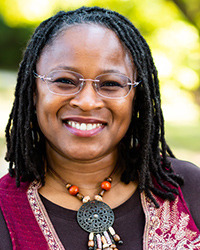
Church members, friends, family and neighbors helped with grocery shopping, cleaning supplies and prayers.
“It was the greatest example of charity I’ve received,” Kennedy said. “It was very humbling.”
Both her family members have since recovered — and Kennedy has taken up a new challenge. Getting people tested was hard work, she found, but persuading church members to get vaccines is harder.
“One thing that became apparent is that the vaccine hesitancy in communities of color was not only about vaccines,” she said. It was also about a lack of trust in government and in the health care system to do the right thing by Black people, she said.
She’s still at it, and the pandemic has taught her that churches coming together can be a power for social change. The success of the COVID testing sites is the perfect example.
“The body of Christ is bigger than your church. It’s a vast group of people with varying gifts, spiritual gifts given by God to be used together.”
In what ways does your congregation participate in the larger body of Christ?
The Rev. Sandra Bonnette-Kim: Staying healthy amid related pandemic dangers — COVID-19 and racial discrimination
What she remembers most from the pandemic so far are the funerals.
Sandra Bonnette-Kim estimates that she has officiated at 40 funerals since the lockdown began in March 2020. At first, they were infrequent. But beginning in December last year, they came fast and furious — one or two a week.
“It got to a point where I told the funeral director, ‘I’ll see you next week,’” she said.
Not all were COVID-19-related deaths. Bonnette-Kim’s congregation, Grace United Methodist Church in Lynn, Massachusetts, had less than a handful of coronavirus deaths, all elderly nursing home residents.
But in this racially diverse, working-class city, people turned to Grace United Methodist for help with funerals, and Bonnette-Kim obliged.
Most of those funerals were graveside, with no online viewing options. That often made it difficult for family and friends to grieve their loved ones.
“It’s a hard thing — losing a lot of members and not being able to say goodbye and celebrate their lives,” Bonnette-Kim said.
She had planned to conduct a memorial service for some of the church’s departed — a forum to help people say goodbye — but then was assigned to a new church in Needham, south of Boston.
At home, Bonnette-Kim worked to keep her college-age daughter studying in Canada and her 80-year-old father, who lives with her and her husband, healthy. (She has an older daughter who lives on her own.)
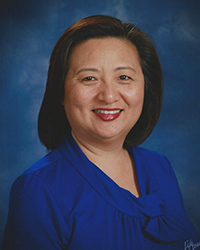
Bonnette-Kim knew that minority groups were at special risk. She was born in Korea. She immigrated with her family to Canada when she was 9 and later came to the United States to study for her master of divinity degree at Garrett-Evangelical Theological Seminary in Evanston, Illinois, where she met her American-born husband, Travis.
Like many Asian-born immigrants, she was disturbed by the way the pandemic prompted a rise of harassment and violence against Asian Americans, who were targeted after political rhetoric falsely blamed them for bringing the virus to the U.S.
Bonnette-Kim said she felt fortunate that she experienced no overt racism at her church. But during her seven years at Grace, she had shared with church members her personal and family experiences of harassment growing up, including her father’s suffering third-degree burns when someone threw scalding coffee in his face.
That history, coupled with the unsettled climate of the pandemic, made her double down on safety. She advised her father not to take walks on his own and joined him whenever she could.
And she found another tool to keep her family connected: Korean dramas on Netflix. Each afternoon, the family would gather to watch an episode — Bonnette-Kim, her husband and her father in Boston, along with her two daughters online.
With life beginning to return to normal, Bonnette-Kim is back at work learning about her new church, Carter Memorial United Methodist, a more affluent and less diverse congregation. She is Carter Memorial’s first clergy of color and only its second woman pastor.
So far, she said, people have been very welcoming. But she anticipates she again will have to educate her congregation about life as a person of color by sharing her life experiences with them. As an Asian American, she embraces that difficult work.
What community partners could bring needed services to your facilities so that people in the community would not have to find them on their own?
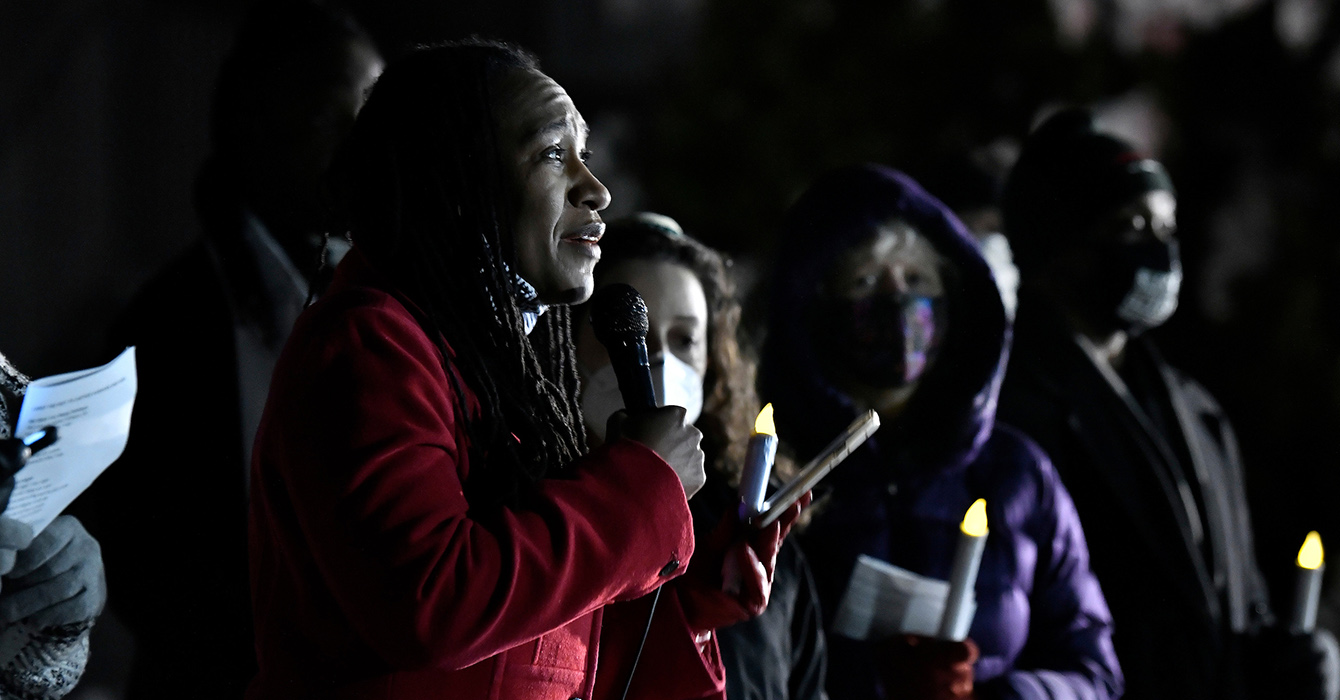
The Rev. Bernadette Hickman-Maynard: Moving forward by slowing down
Bernadette Hickman-Maynard has three big jobs.
She is the pastor of Bethel AME Church in Lynn, Massachusetts, about 10 miles north of Boston. She is a racial justice organizer with the Essex County Community Organization, a multifaith network of 40 congregations that advocates on issues such as policing and criminal justice reform. And she’s the mother of four young children.
She divides her time between the three, working three days a week for the church and three days a week for the community organization. Evenings she devotes to her family.
The pandemic made her realize that the only way to be present to all three is to find time for restoration.
Early on during the outbreak, she found that her 80 mostly elderly church members were needing a lot more assistance than usual.
“The older people wanted to be on the phone,” Hickman-Maynard said. “They didn’t know the technology. So I would have to call them individually. I had to alleviate their concerns, explain online giving and how we would do church in a pandemic. Conversations about the business of the church were elevated because of people’s fears and anxieties. People wanted more contact.”
Three of her elder church members died during the pandemic, one of COVID-19. In fact, it was an online funeral on Zoom in April 2020 — one month into the shutdown — that convinced her the church could successfully worship through Zoom with full participation from church members. Her husband, Theodore, who is also ordained in the AME Church, was able to help on Sundays with the music.
Following the death of George Floyd in May, her organizing work kicked into high gear. The community organization pressed for passage of a police reform bill that protects people of color from racial profiling and sets standards for police accountability.
During this frenetic time, Hickman-Maynard had two consolations. She was able to save time on the commute from her home in Randolph, about 30 miles south of the church, and her mother, who lives with the family, was able to help with cooking and attending to the children, each of whom goes to a different school.
Whom could you engage to help support you and your ministry in these trying times?
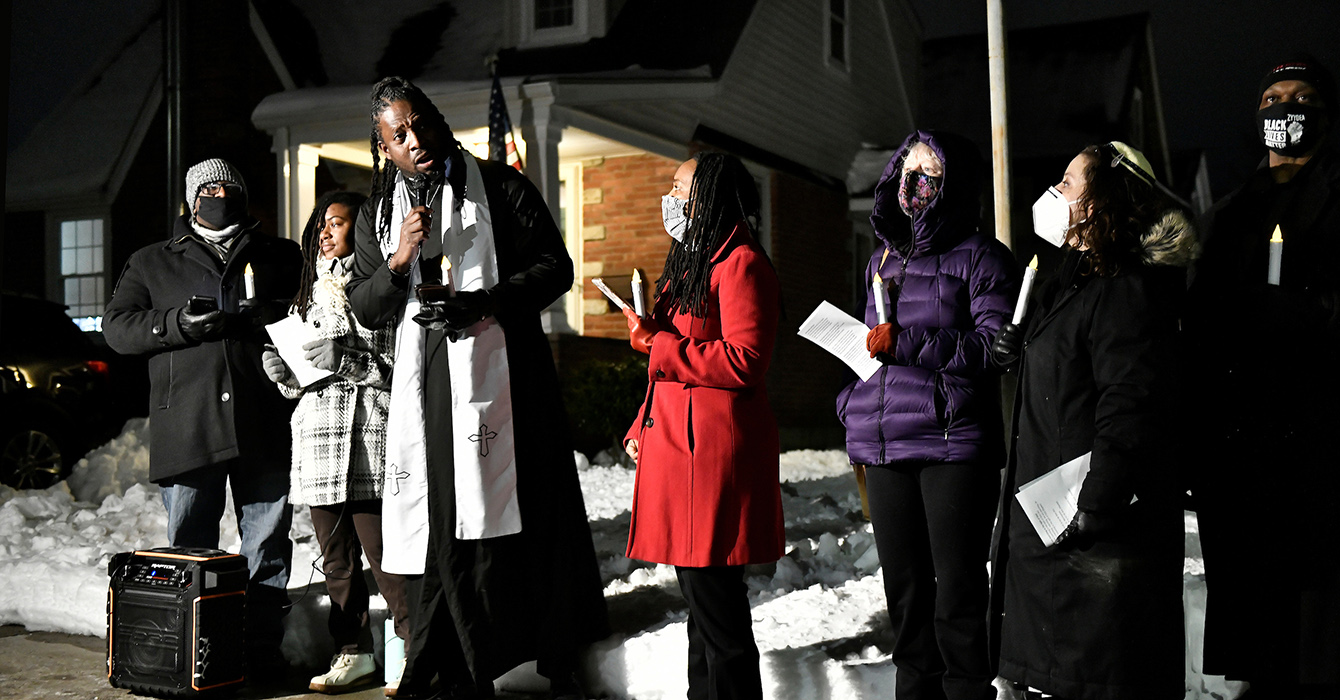
Still, juggling it all was not easy.
“I want to do this for the long haul,” she said. “That means I’m not going to be available for everything.”
She had stumbled upon Peter Scazzero’s popular books on emotionally healthy spirituality before the pandemic. The minister and marriage and family counselor teaches that the best way to move forward is to slow down and find time for rest.
Hickman-Maynard adopted his formula for rest, which consists of one day a week, one week a month and one month a year.
“It’s very hard, but it’s something I’m intentional about doing,” she said. “Because I’m able to take this time for myself and restore, it means I’ll be in the fight for the long haul and healthy while I’m doing it.”
How are you planning for your long-term health and restoration?
Questions to consider
- It may seem that a smaller congregation means less work, but this is far from the truth. What other assumptions are we making about smaller congregations and their pastors?
- How is your particular congregation marking this season of challenge and loss? Is your community offering spaces for congregants to process grief?
- In what ways does your congregation participate in the larger body of Christ?
- What community partners could bring needed services to your facilities so that people in the community would not have to find them on their own?
- Whom could you engage to help support you and your ministry in these trying times?
- In this season, it may be hard to think long term. Yet planning for a leader’s health and sustainability is still necessary for thriving in ministry. How are you planning for your long-term health and restoration?
















